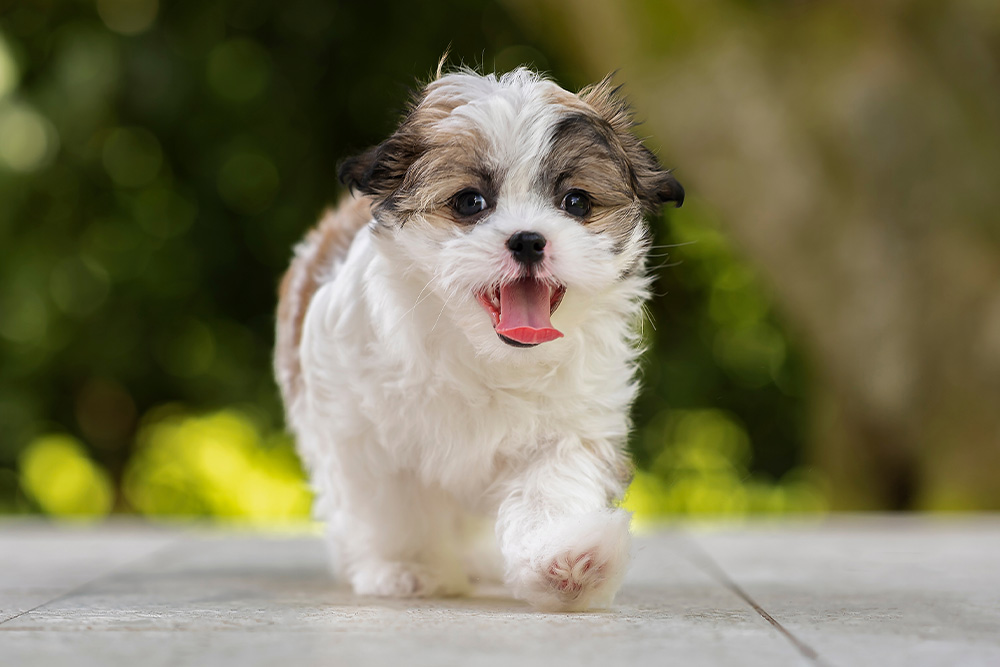Dachshund
Getting a dog is a big decision, and taking the time to choose the right breed is fundamental. Every breed comes with its distinct personality and requirements. Certain dogs are more energetic than others and require some daily exercise. At the same time, some are more easy-going and can be suited to apartment life. Grooming and other important care is also worth consideration. Moreover, certain breeds are genetically prone to various conditions, which can result in higher veterinary costs. Knowing all of these things will help you decide and also help you get ready for the next level. The same goes for the Dachshund breed as well. Would you like to read more about these special pooches? Find out if this loving breed is the right dog for you!
In terms of looks, no breed is quite like a Dachshund! For kids and sensitive types, their cuteness can be hard to resist. And even the personality of the dogs is remarkable. It is worth finding out what temperament these little dogs have. Additionally, the history of the breed is quite fascinating, providing you with background on where Dachshunds hail from. However, before you end up getting a dog of such a breed, be sure to spend some time finding out about the health issues they are susceptible to. Also, read about the basic rules of care so that you know how to prepare. Do you want a four-legged friend of the Dachshund variety? Test yourself!
Appearance
The Dachshund is a distinct dog breed known for its stature. Its body is long and thin, and its legs are short, so it looks a little funny but also very endearing. This, in turn, is why Dachshunds also have names like sausage dogs or wiener dogs. Also, their snouts are long, as they were created for tracking.
While there are different sizes of Dachshunds, they are generally considered a small breed. Three size classes exist based on the variants, including standard, miniature, and kitchen. The kaninchen variant is the smallest of the bunch. It is interesting to note that the body length of a Dachshund is often greater than its height!
They have huge, hanging, oval-shaped ears that also contribute to their unique appearance. However, the dark, shiny eyes enhance their cuteness, and many people find their gaze irresistible. The tails are of medium-length, carried either horizontally or slightly upright.
There are countless variations in this breed around the way of fur. Depending on the variety, a Dachshund’s coat can be short and smooth or long and fluffy. Wire-haired Dachshunds also have a special coat appearance and long hair on the face, which looks a bit like a beard and makes them look serious and old.
The coat colors also vary from black, grey, brownish, and beige, alone or in combination with spots. However, you will never see a Dachshund in a white coat. This color has not evolved within this breed since the early role of all Dachshunds was as hunters needing to blend in with the colors of the forest habitat.
Dachshund Breed History
Dachshunds are an extraordinary breed that was created for a specific purpose. The breed was created in Germany in the 15th century, where they were originally used to hunt badgers, rabbits, and other small creatures. With their long back and short legs, they were perfect for sniffing and peering into the holes of forest animals. It turns out that European aristocracy also loved the adorable and daring Dachshund, which led to additional breeding and refinement in both looks and personality.
It is likely they were bred from dwarf traits of large hunting dog breeds. They were then crossed with terrier and spaniel breeds, giving rise to the long-haired and wire-haired varieties. This is a breed born to hunt but has adopted the role of family pet. Today, Dachshunds remain an extremely popular breed that can be loyal and affectionate companions.
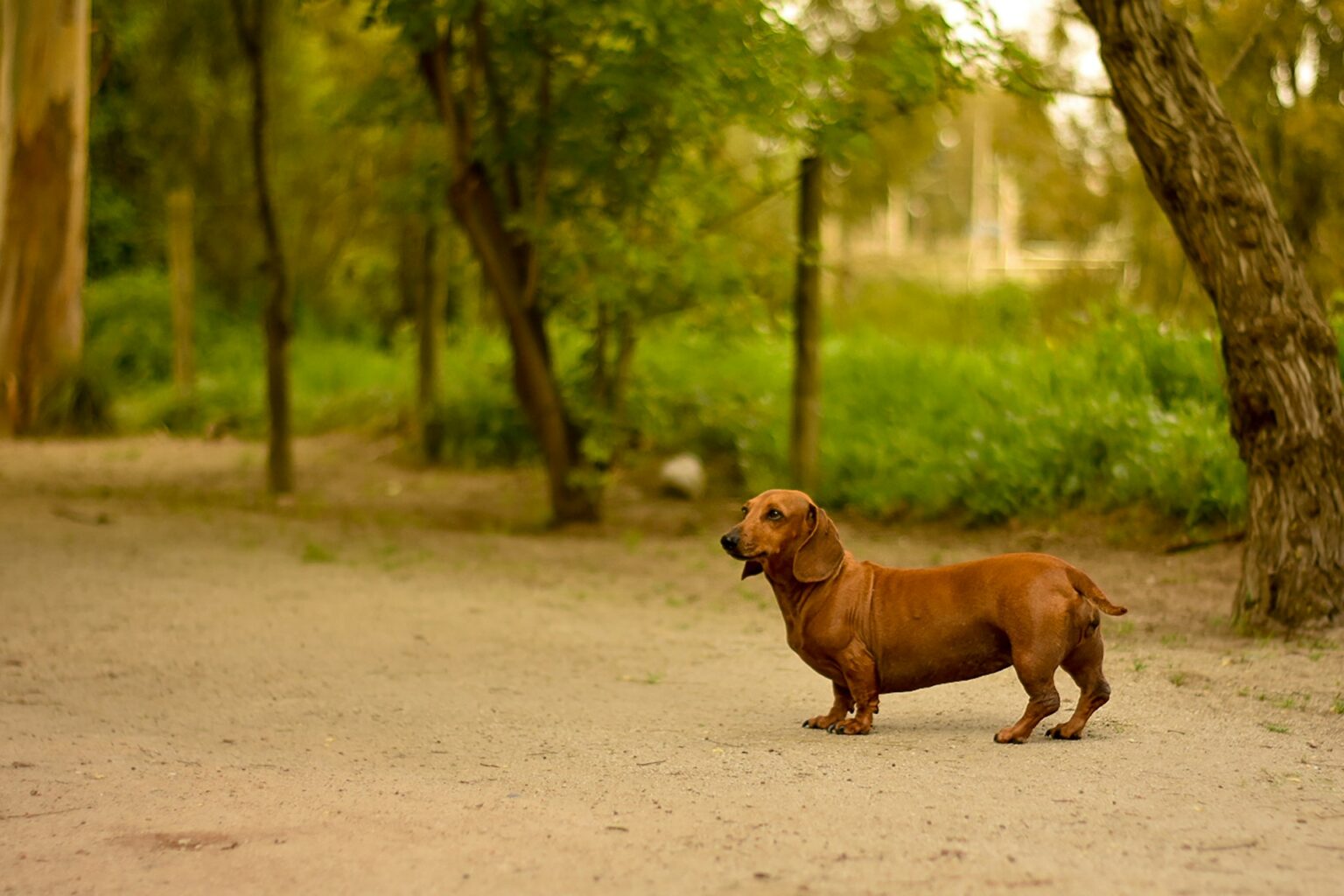
Dachshund Personality
Dachshunds have a unique personality. They are small, sweet dogs that can initially be a bit timid in unfamiliar situations. On the other hand, they can also be quite courageous due to their natural hunting instinct, which they have not lost. Their owners can see their hunting instincts in their curiosity. Dachshund dogs like to explore the things around them. Despite their small size, these dogs have tons of energy.
Dachshunds also make great watchdogs. They are highly observant of the environment and respond to changes and threats. This is why they could bark a lot. However, they can be trained not to react to every little stimulus. So even if loud dogs bother you, a Dachsund can be for you! They’re very smart, so they are quick to learn new commands. But their stubbornness can lead to some trouble.
A very characteristic thing about the Dachshunds is that they become very attached to their owner, so they will be your lovely companion and friend. These types of dogs are sensitive to the emotions of their owners. They also tend to play great with kids, too. They can be really funny pets that bring joy to any family. However, they do not like to be left alone for a long time.
Similarly, these pets enjoy interacting with other pets. However, they may get a tad territorial, which should be kept in mind when socializing with them. They may instinctively chase and catch smaller animals. Do not forget to train them well, as Dachshunds may also become unfriendly towards strangers. If not handled, cared for, and trained properly, dogs of this breed can become a problem and turn aggressive. But, all in all, if you care for your Dachshund, you will receive a lot of love in return.
Dachshund Health
Small breeds like Dachshunds may be more prone to genetic disorders because they are purebred dogs. Prospective owners should be aware that many breeds have particular health concerns due to the pressure of careful breeding and limited gene pools. Owners must visit the vet regularly for optimal dog care and perform preventive examinations. Dog maintenance also implies keeping your dog at its best weight with skilfully selected bodily exercise and dieting strategy.
You should also be aware of the signs of diseases characteristic of the Dachshund if you want to have one. This type of education can identify problems earlier and treat them more effectively. Asking about the dog’s parents’ health background, which can help identify possible genetic issues, is also a good idea. Of course, responsible breeders do health tests, lowering the risk of diseases they pass on to their puppies. In the end, love and proper care keep every dog happy and healthy.

Spinal Disorders
Dachshunds are adorable little sausage-shaped animals, but their long body type does come with some issues. Anatomically, some types of spinal problems are common in this breed. With a long spine and short chest, they are prone to injuries. Intervertebral Disc Disease (IDD) is one of the most prevalent diseases in this breed. It is a degenerative disease that affects the dog’s spinal cord and is hereditary. The symptoms vary. Dogs can feel pain. It can also result in partial or complete paralysis. That means that your dog will probably struggle to move around over time. The owners must not dismiss such signs. A quick vet treatment will prevent the dog from suffering.
Brittle Bones
Weak bones are another downside to this breed. Most impacted are wire-haired Dachshunds. It is known that this variety is prone to brittle bone disease. Consequently, this makes the dogs susceptible to fracturing. Dog teeth also are more prone to dental problems. Sadly, these conditions are incurable. But you can reduce the symptoms and provide dog comfort as much as possible. From there, the owners should ensure that their dogs are not landing from any large heights or getting too much exercise. Dental care and the correct diet to strengthen the bones are also essential.
Ear Problems
Because of their anatomy, Dachshunds are susceptible to a number of different ear-related health issues. Their big, floppy ears can favor the build-up of dirt, which promotes an infection. Also, the airflow within the ear canals is limited, which makes matters worse. Hearing loss can also be due to a genetic defect in some Dachshunds. This means that Dachshund owners need to check their dog’s ears regularly and keep them clean to avoid health issues.
Eyes Problems
Another devastating condition particular to Dachshunds is eye disease. Their genetics cause it. A very prevalent disorder is cataracts, which is when the lens of the eye clouds up. These dogs are also prone to glaucoma and some retinal and corneal diseases. They generally result in a progressive loss of vision, ultimately culminating in blindness. This presents an added challenge to owners, who must be vigilant for any signs of discomfort or decreased performance from their animals. Visiting the vet will catch these health issues early.
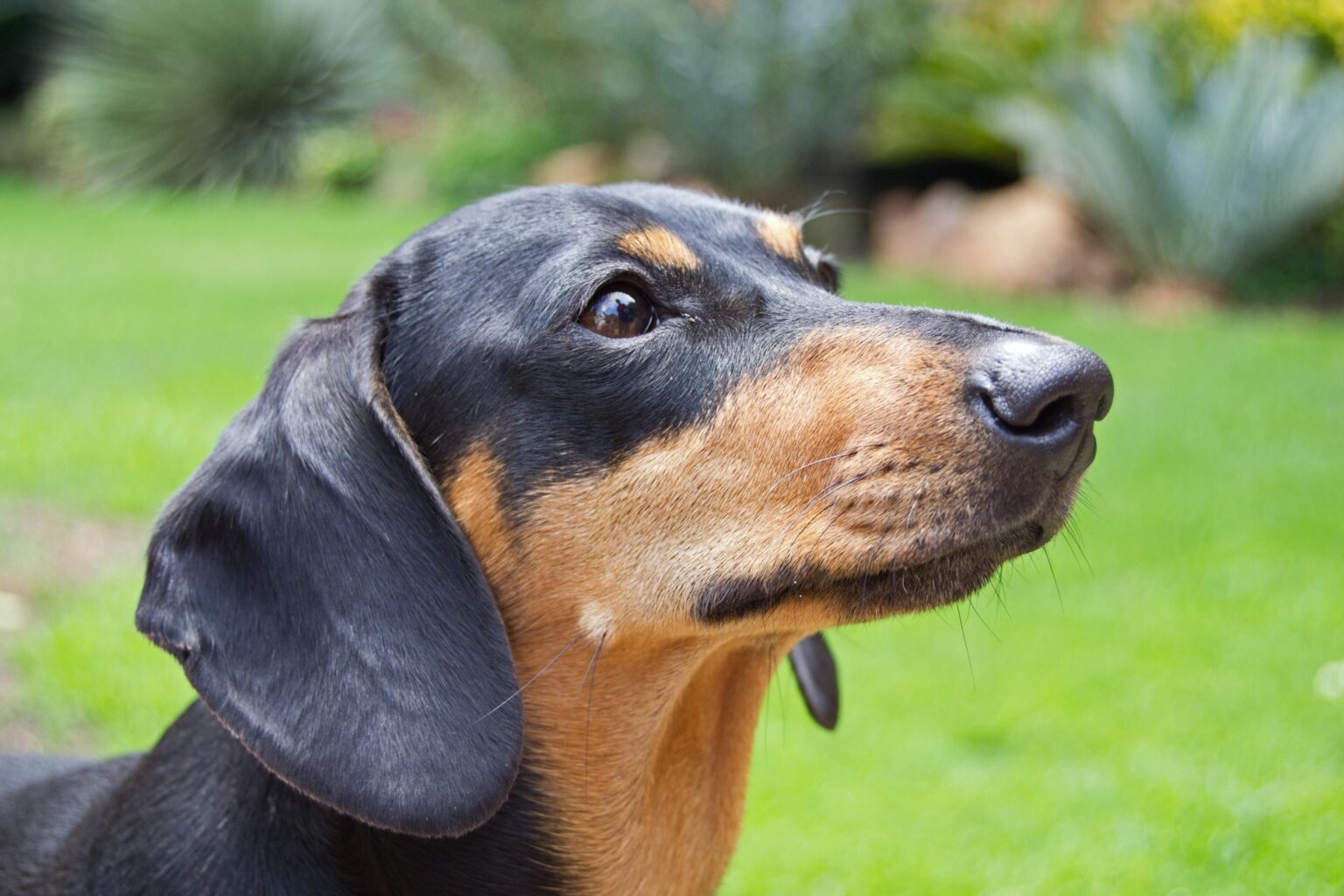
Neurological Disorders
Neurological disorders can occur, as well as more common ones found in Dachshunds, for example, congenital epilepsy. Seizures, the most identifiable symptom of the disease, result from a malfunction of the brain. Another sign is habitual yawning, which can be among the first alerts that the attack is going to occur. This congenital disease is not treatable, and in an epileptic state, a dog can die, so an owner has to be very careful in handling and caring for such a dog. Additionally, dogs are not immune to meningitis or Cushing’s syndrome either.
Thyroid Diseases
Hypothyroidism, or low thyroid hormone levels, is a common health issue in many dog breeds, including Dachshunds. Genetic predisposition plays a main role in the etiology of these issues. However, they can also be induced by autoimmune diseases and environmental factors. Thyroid issues also tend to have very subtle and vague signs, which makes a vet visit the most reliable way to detect the disease. For instance, obesity associated with hypothyroidism is a clue.
Allergies
Dachshunds often develop allergies. These issues can be caused by environmental factors or food. Dachshunds are also prone to allergies in the form of skin problems, likely because their short stature lends itself to allergen build-up in their close surroundings. This could be more common with long-haired dogs, too. Significant caution is what the owners of Dachshunds need so that they can be alerted by potential symptoms of allergies and consult a vet immediately if anything happens.
Dachshund Care
Purebreds have different needs that should be taken into account before you decide to purchase a pet. First, housing conditions vary for specific breeds. Some dogs need more space. Another important point is exercise. High-energy breeds need vigorous workouts and lengthy walks. The diet is another area that owners should be mindful of since nutritional requirements vary based on the breed.
Another key factor is grooming, which will depend on the length of the dog’s hair. The final is training. Young dogs need training to behave well so that they do not become a danger to humans and other animals. But what are Dachshund dogs like? Scroll down for some rules of care on this breed. If you are going to get yourself a Dachshund, you may want to know what these dogs require to ensure you have a happy and healthy life with your dog.
Safe Environment
Dachshunds are small dogs and do not require the same level of space that bigger breeds need. This means that they can live in apartments, but their owners need to be able to provide them with a resting and exercising area. If you have no garden, you need to walk these dogs a lot more regularly, as they need room to burn off some energy. These dogs are observer-type dogs, so they might want to stay outside or on the terrace, balcony, and windows. Then, they need to guarantee a safe environment.
They have a hunter’s drive, so a fence is a must outside, or they will take off after an animal is in the street. You may need a set of special dog steps or a ramp inside the house to allow your pooch to get up and down from higher places. These dogs are prawned for many diseases, so the owner must prevent jumping injuries. The Dachshund is also a sociable dog that cannot withstand isolation for several days, so it needs contact with its owner, with people, and with other animals.
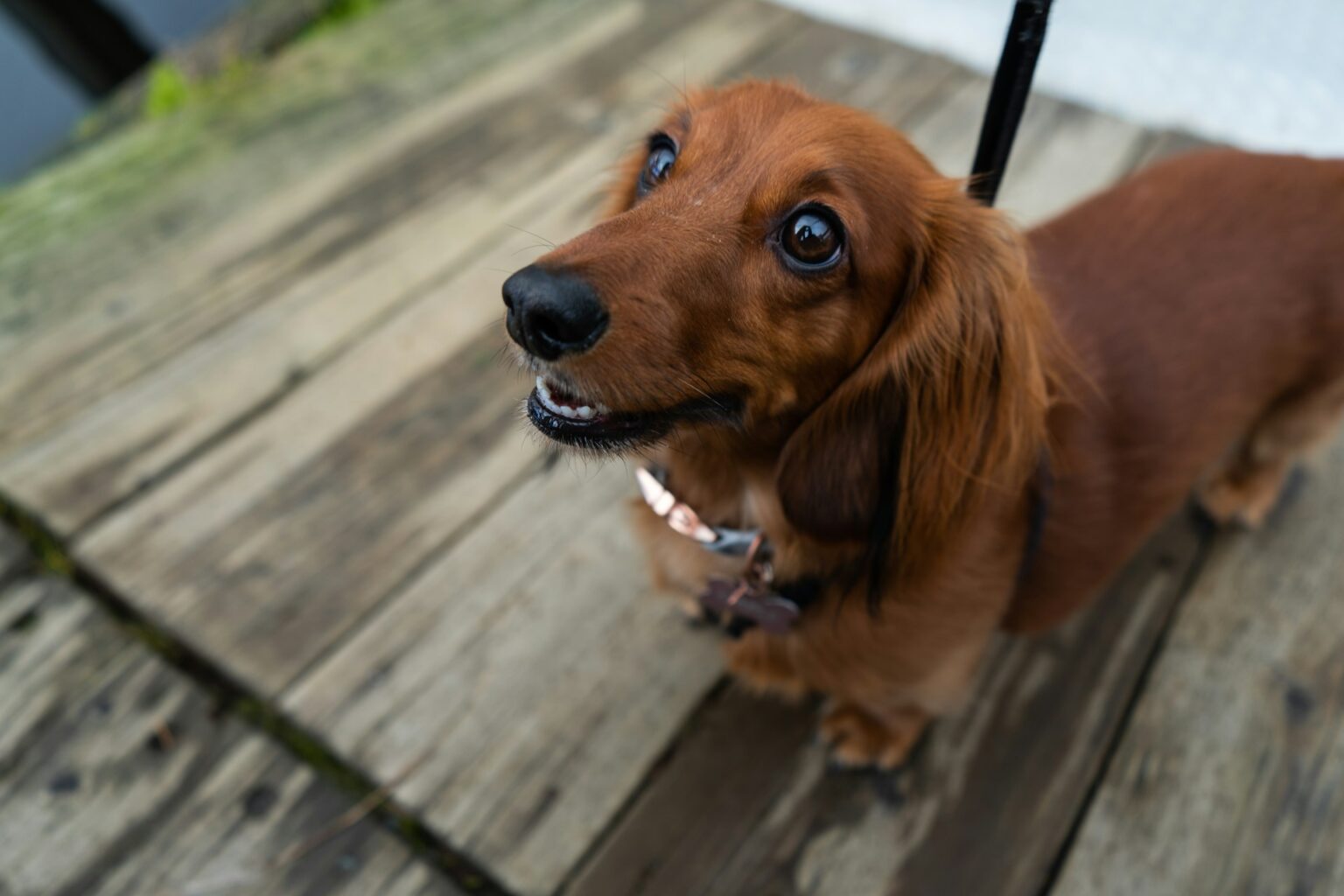
Diet and Nutrition
Care of a Dachshund includes a proper diet. This breed is prone to various spinal issues, so owners should ensure they do not allow them to become overweight. This is highly important, as the wrong body weight puts immense pressure on the fragile bodies of Dachshunds. Moreover, owners should also not forget to feed the dogs with all the nutrients they need to build healthy bones, coats, and skin. Not only that, but Dachshunds also commonly suffer from food sensitivities. This, therefore, means you need to be more cautious with the ingredients of the food to evade allergens. Also, you can detect certain allergens in your dog under veterinary supervision.
Physical Activity
Dachshunds were bred as hunters, and they still instinctively required regular exercise. Keep in mind these small dogs can be high-energy! Daily walks are a must, and you can definitely play games with them, but the games must be suited to their physical abilities. Dogs’ long backs and short legs make them prone to health problems, especially the back and joints. Hence, they must get a decent balance of physical activity. Dachshunds are prone to herniated discs, so you should not force them to run or jump too much. Also, gentle exercises that assist with strengthening the muscles of the back and legs are a good idea.
Grooming
The requirement of grooming will depend upon the coat type of these dogs, but on the whole, they need proper grooming to look healthy and beautiful. Short-haired Dachshunds have a low-maintenance coat that just requires regular brushing. However, it is important to remember that their skin is prone to irritation and allergy. In comparison, long-haired canines need tremendously greater attention. Because their long hair is prone to become matted, they require it to be combed more often. The wire-haired Dachshund has a completely different coat, which also requires frequent combing. Trimming also helps maintain the structure of their coat and prevents too much dirt from building up within their fur.
No matter their coat type, all Dachshunds are at risk for ear infections, so it is essential to clean and examine their ears regularly. Dachshunds are also known for some eye problems, which will need to be checked out from time to time. If any irritation occurs, the owners need to consult the vet immediately.
Training
As a hunting breed, Dachshunds require proper, thorough training to become good dogs. This breed needs socialization with other dogs and people from an early stage of life in order to know how to act in various settings. Dachshunds have a tendency to be territorial, which can spark aggression against other dogs or strangers. So, teaching them how to respond to stressful situations and cope with novel stimuli is essential. Dog owners must also refrain from punishing their dogs, as this can only aggravate their aggressive behavior. Dachshunds can be a little stubborn and may sometimes try their hardest to act like they never heard you, so patience and consistency are key.

Dachshund Dog FAQs
If you really paid attention to everything you read, you would have already learned more about a Dachshund than the average person. But if you want more, here are some additional FAQ answers.
Is a Dachshund a Good Family Dog?
Dachshunds are well suited for family life because of their great temperament and small size. Their playful and curious demeanor makes them ideal pet buddies for kids and adults alike! Nonetheless, to take advantage of their company, the owners need to remember proper training.
What Size Is a Dachshund?
Dachshunds are a smaller sized dog breed. These dogs come in varying sizes, from standard to miniature. On the whole, the dogs do not rise better than 8 inches/20 centemetres high. And they weigh anywhere from 9 pounds/4 kilograms to 33 pounds/15 kilograms depending on the type.
How Much Does a Dachshund Cost?
Thinking about a Dachshund puppy? It will cost you a thousand or two, depending on your breeder. It is worth choosing breeders who make a medical check-up for Dachshund regularly because of their susceptibility to many diseases.
Sources
- Camilla Sichlau Bruun, Charlotte Bruun, Tine Marx, Helle Friis Proschowsky, Merete Fredholm (2020). Breeding schemes for intervertebral disc disease in dachshunds: Is disc calcification score preferable to genotyping of the FGF4 retrogene insertion on CFA12
https://pmc.ncbi.nlm.nih.gov/articles/PMC7708201/ - Aliah F. Shaheen, Daniela Lins, Thais Toledo, Constanza B. Gómez Álvarez (2023). Postural stability measures in healthy miniature Dachshunds obtained using a pressure mat and a force platform: a validity and reliability study.
https://pmc.ncbi.nlm.nih.gov/articles/PMC10291811/
- Dachshund
- Appearance
- Dachshund Breed History
- Dachshund Personality
- Dachshund Health
- Spinal Disorders
- Brittle Bones
- Ear Problems
- Eyes Problems
- Neurological Disorders
- Thyroid Diseases
- Allergies
- Dachshund Care
- Safe Environment
- Diet and Nutrition
- Physical Activity
- Grooming
- Training
- Dachshund Dog FAQs
- Is a Dachshund a Good Family Dog?
- What Size Is a Dachshund?
- How Much Does a Dachshund Cost?

